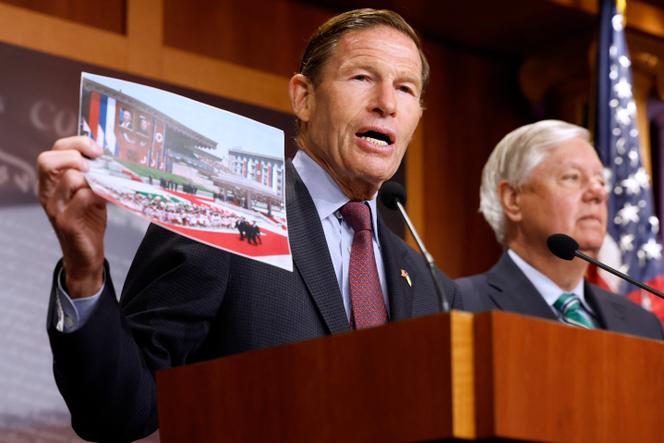


The unanimous ratification by the Duma, Russia's lower house of parliament, on Thursday October 24, of the "strategic partnership" between Moscow and Pyongyang, which provides for mutual assistance "in the event of aggression" by either party, legitimizes the presence in Russia of thousands of North Korean troops. Confirmed by the United States and NATO, their presence is still categorically denied by the Democratic People's Republic of Korea (DPRK, North Korea's official name), and more quietly by Russia. Against the backdrop of the unknown outcome of November's US presidential election, the presence of elite North Korean units on the Ukrainian front openly internationalizes the conflict.
According to Western sources, 3,000 North Korean soldiers are training at various sites in Russia. South Korean intelligence services claim that over 10,000 are expected to be deployed on the Ukrainian front in the coming weeks, raising fears of escalation. With its troops stationed 7,000 kilometers from their bases, the DPRK is becoming a fully-fledged player on the international stage. This change in positioning will prompt Europe, in particular, to change its perception of the country as a geographically remote risk that has never been one of its priorities.
The deployment of North Korean troops on the Ukrainian front could lead South Korea to increase its deliveries of both defensive and offensive weapons to Ukraine. Until now, Seoul has officially supplied Kyiv with non-lethal military equipment such as mine-clearing equipment (its offensive arms deliveries being channeled through third countries). Seoul plans to send military intelligence officers to Ukraine to observe the combat tactics of North Korean troops and take part in prisoner interrogations.
In the case of the DPRK, the deployment of troops on the Ukrainian front to support its Russian ally is its most visible demonstration of strategic repositioning. Since the Korean War, the North Korean army (1.2 million men) has not taken part in any major conflict. Unlike South Korea, which deployed troops (320,000 men) to South Vietnam in support of American forces – including the Fierce Tiger Division, which was tasked with "cleaning up the terrain" following American napalm bombings – the DPRK sent only airmen to North Vietnam, no ground troops. It did the same in Egypt during the Yom Kippur War in 1973. On the other hand, it sends military technicians to the countries to which it sells armaments to explain how they work. For the troops deployed on the Ukrainian front, this will be a baptism of fire and an opportunity to experience modern warfare at first hand.
You have 65.61% of this article left to read. The rest is for subscribers only.
